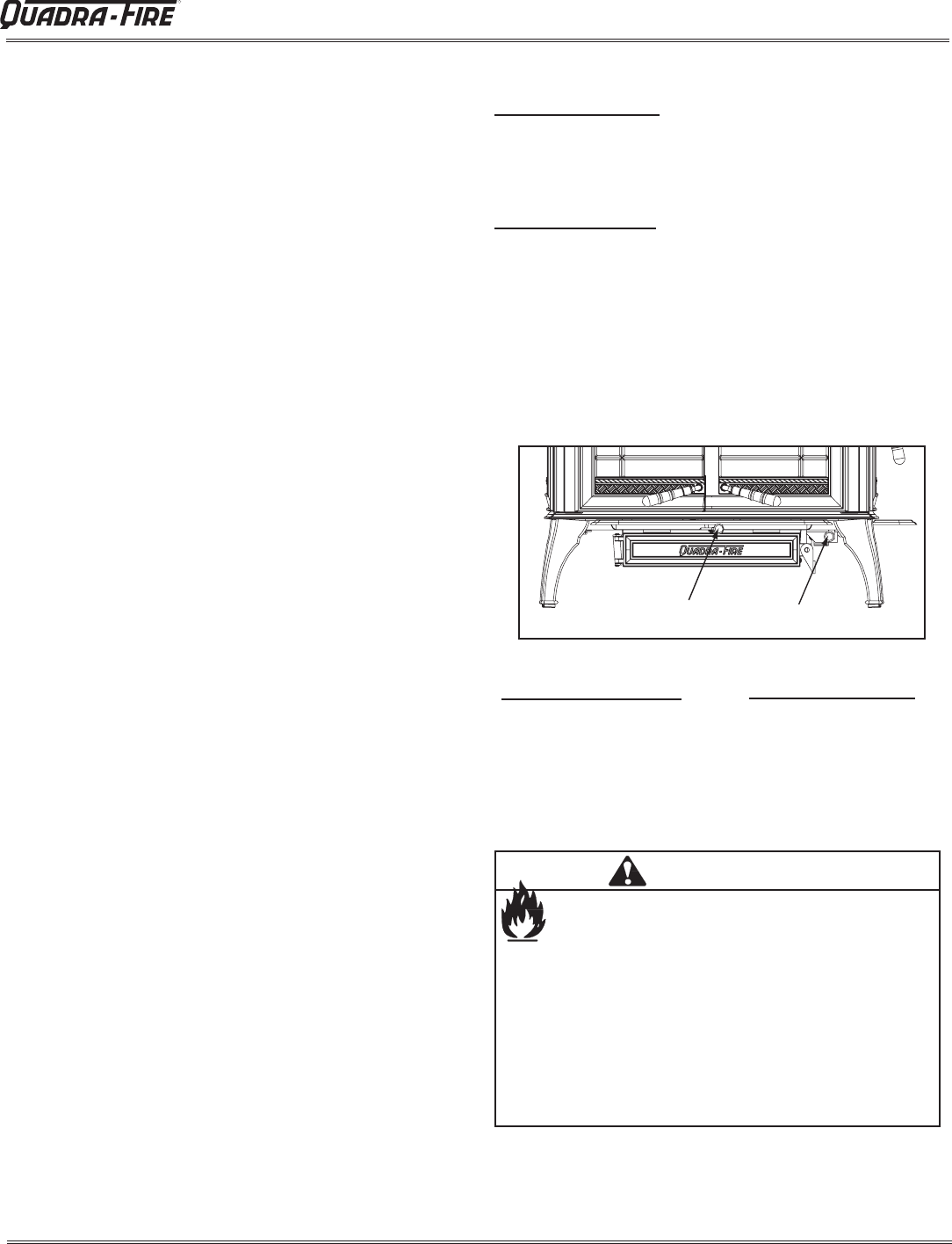
Page 27
Cumberland Gap Wood Stove
R
November 5, 2010
7006-188G
The Primary Air Slide Control located under the ashlip ad-
justs the burn rates. Figure 27.1.
3. Final Stage
The fi nal stage of burning is the charcoal stage. This occurs
when the fl ammable gases have been mostly burned and
only charcoal remains. This is a naturally clean portion of
the burn. The coals burn with hot blue fl ames.
•
It is very important to reload your appliance while enough
lively hot coals remain in order to provide the amount of
heat needed to dry and rekindle the next load of wood.
• It is best to open the Primary Air Control and the Start-Up
Air Controls before reloading. This livens up the coal-
bed and reduces excessive emissions (opacity/smoke).
• Open door slowly so that ash or smoke does not exit ap-
pliance through opening.
• Break up any large chunks and distribute the coals so
that the new wood is laid on hot coals.
Air quality is important to all of us, and if we choose to use
wood to heat our homes we should do so responsibly.
We need to learn to burn in the cleanest way possible al-
lowing us to continue using our wood appliances for many
years to come.
D. Combustible/Non-Combustible Materials
• Combustible Material
Material made of or surfaced with wood, compressed
paper, plant fi bers, plastics, or any material capable
of igniting and burning, whether fl ame-proofed or not,
plastered or unplastered.
• Non-Combustible Material
Material which will not ignite and burn. Such materials are
those consisting entirely of steel, iron, brick, tile, slate,
glass or plasters, or any combination thereof.
Materials that are reported as passing ASTM E 136,
Standard Test Method for Behavior of Materials in a
Vertical Tube Furnance at 750
o
C and UL763 shall be
considered non-combustible materials.
• Non-Combustible Sealant Material
Sealants which will not ignite and burn: Rutland, Inc.
Fireplace Mortar #63, Rutland 76R, Nuflex 304, GE
RTV106 or GE RTB116 (or equivalent).
E. Air Controls
• ALWAYS OPERATE THIS APPLIANCE WITH
THE DOOR CLOSED AND LATCHED EXCEPT
DURING START-UP AND RE-FUELING OR
WHEN USING THE FIRESCREEN.
• OPERATING WITH THE DOOR PARTLY OPEN
CAN CAUSE:
• HOT EMBERS OR SPARKS TO FALL OUT
• FLAMES AND SMOKE MAY BE DRAWN OUT
FROM FIREBOX OPENING
Fire Risk.
WARNING
Start-Up Air System
The combustion air enters at the rear of the fi rebox through
the rear air tubes. This air supply is controlled by the Start-
up Air Control. For more air push control IN, for less air pull
control OUT.
Primary Air System
The primary air enters below the ash catcher and is directed
to the upper front of the fi rebox, near the top of the glass
door and to the lower front of fi rebox. This preheated air sup-
plies the necessary fresh oxygen to mix with the unburned
gases, helping to create secondary, tertiary and quaternary
combustions. This air is regulated by the Primary Air Slide
Control. For more primary air slide control LEFT, for less air
slide control RIGHT.
Figure 27.1
Start-Up Air Control
OPEN - PUSH IN
CLOSE - PULL OUT
Primary Slide Control
OPEN - SLIDE LEFT
CLOSE SLIDE RIGHT
Start-Up Air
Control
Primary Air
Slide Control
